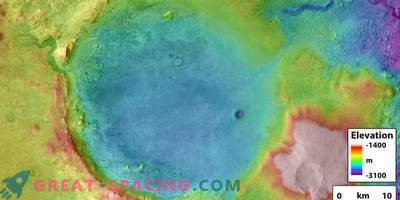
NASA scientists scheduled for the middle of August a meeting at which they should discuss new landing sites for the Mars rover, which should perform an ambitious task. An all-terrain vehicle should try not only to find traces of life on Mars, but also drill out rock samples from the rocks, which will then be delivered to Earth, for analysis. At this meeting, a list of the best landing sites should be discussed, although the selected points are likely to change with the advent of new images and scientific data from NASA satellites that continue to fly around Mars in its orbit.
The new mission, which is often called the "Mars 2020", is to start from Earth in July or August 2020, in order to land on Mars in February 2021. In this case, a heat shield, parachutes, and the “sky crane” descent system of the Curiosity satellite (shown in the picture) should be used. Work is also planned on the system of navigation and soil recognition, which would allow the descending spacecraft, for more precise control, to obtain new images and compare them with the images in the computer database. Thus, the system could have a much larger set of potential landing sites for landing. Another important task is how an all-terrain vehicle will be able to cross the surface in order to circumvent all the objectives of the mission, including drilling twenty rock samples, in just one Martian year, which is about seven hundred Earth days. The following are some of the most acceptable landing sites:
Neely Fosse
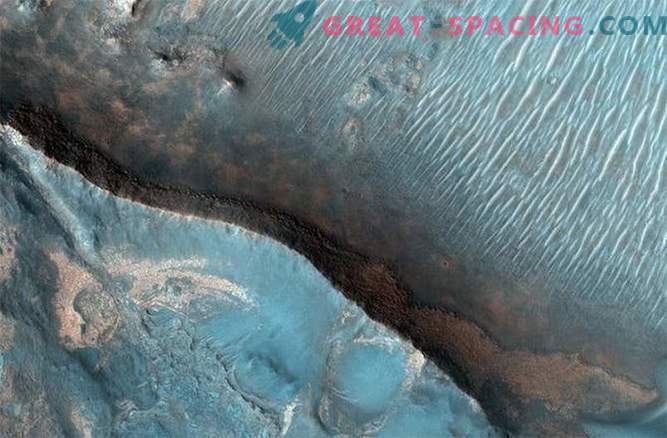
Between a large volcano and an old crater from a collision, there is an area known as Neele Fosse, which is marked by a wide curved depression, more than a thousand meters deep into the Martian surface. The hollow of Nili Fosse is filled with clay-containing rocks that could have been formed in the presence of water. This may be the key to detecting stored organic matter. Nili Fosse is the main contender for the Curiosity mission, but the location of this cavity is very difficult to work with.
Jezero Crater
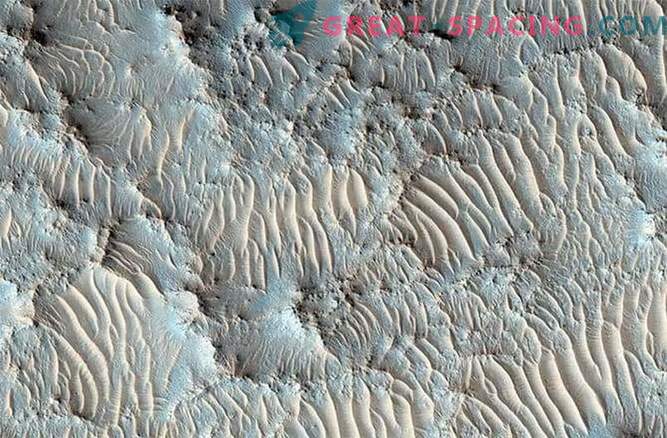
Scientists hope to meet the water inside the old melted crater, known as Jezero. It is located near the Martian equator. It is possible that water flowed from the northern and western sides of the crater, where canals are now visible, to the southern wall, creating a third channel there. Scientists do not know for sure whether water existed there, although they think that there were at least two separate water basins about 3.5 billion years ago. The chemical data collected by the Martian orbiters show that Jezero should have clay and other minerals, such as carbonic salts, that could have been formed using water. If there was life on Mars during the time when Jezero was filled with water, then evidence of this may be preserved in volcanic sediments.
Northeast Big Syrt
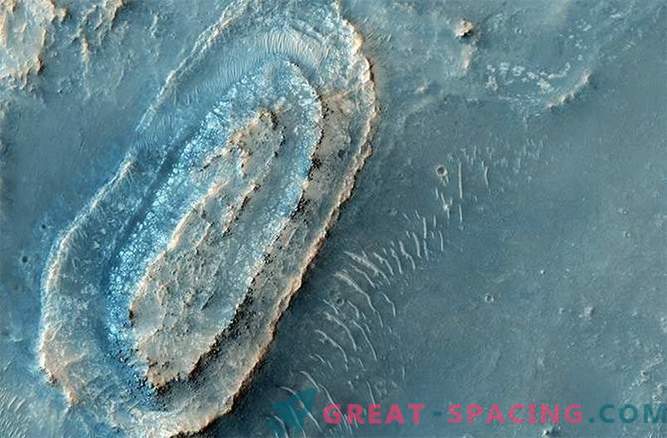
The ancient region, which has a diverse collection of water-formed minerals, is on the list of candidates for the Mars 2020 mission and is considered as a potential landing site. The zone is located between the north-eastern part of the Big Syrt upland and the north-western edge of the giant Isidis Planiti plain.
Crater Holden

Scientists pondered for a long time, looking at the 100-mile crater Holden, which has all the signs necessary to detect life. And instead, they sent Curiosity to crater Gail. The goal was achieved, less than seven months after the landing of the rover on the planet - August 3, 2012.
Crater Holden, along with Eberswalde Crater and Mort Wallis valley, are listed for the proposed landing of Curiosity in the framework of Mars 2020. These objects are interesting for scientists in terms of searching for artifacts of ancient life and, possibly, of delivering samples to Earth.
The current Holden Crater is believed to have once been "Holden Lake". It contains two layers of sediments, the lower of which is characteristic of a large lake. The upper layer was probably formed when water gushed from the area known as the Uzboy Valis and broke through the rim of the crater. The current of water was to be so enormous as to roll boulders tens of feet in diameter. In the ancient basin of Holden there are numerous small craters, many of which are filled with sediments.
Southwest Melas
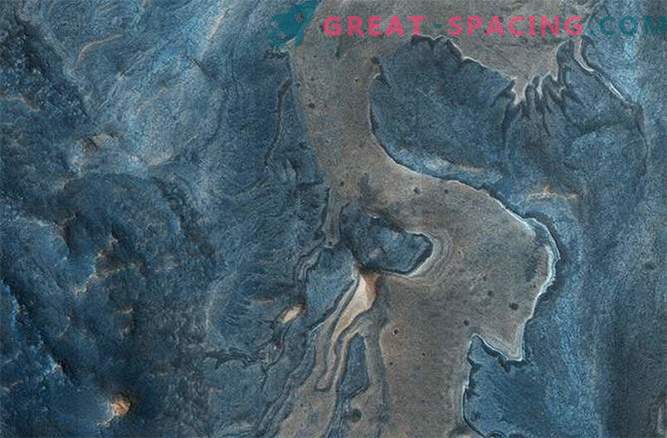
A wide segment of the massive canyon of the Mariner Valley, known as Melas Kasma. It cuts through layered sediments, which are considered deposits of an ancient lake. The composition of the soil of Melas contains hydrated sulfates and other minerals obtained from water. The area to the southwest contains fan-shaped structures indicating that the water level in the lake fluctuated. Another attraction of Melas is the proximity of seasonal surface anomalies, the so-called RSL flows - “lines repeating the outlines of slopes”, which may indicate the presence of salt near the surface. "Martian streams" can potentially be explored during the expansion of mission objectives.
